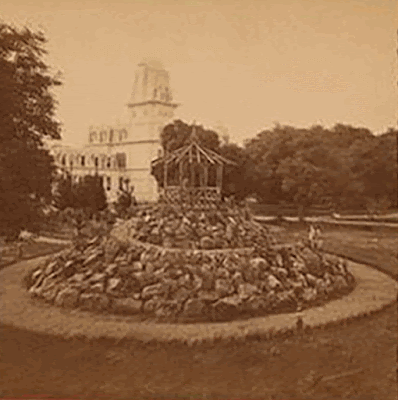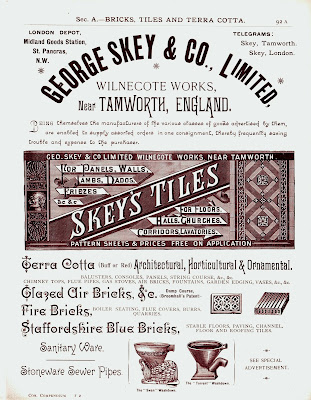Five years ago, I posted a blog entry here on my memories of the musical “Annie” and the Minton majolica spotted in the John Huston film version as seen below.
Late last year I discovered the backstory on how the Minton mermaid centerpiece, "Flower Bearers," found its way into the movie and a brief provenance of where it came from as well as where it is now. I thought some readers might find it interesting.
The centerpiece originally came from Sherwood Hall, the home of socialite Mary Kellogg Crittenden Hopkins, in Menlo Park, California, a small suburb of San Francisco. The home had previously been owned by California Governor Milton S. Latham under the name of Thurlow Lodge. Whether the centerpiece had been purchased with the home or moved there from her Nob Hill home in San Francisco is not known.
Another interior photo shows a Minton jardiniere on a Minton pedestal.
When the estate was liquidated in 1942 the content of the house was put into auction. A large number of the antiques were purchased by Warner Brothers studio for use in their pictures. It was through this acquisition that the centerpiece found its way to Hollywood and ultimately into the 1945 movie "Rhapsody In Blue" and later onto the dining table of Daddy Warbucks in the 1982 movie “Annie.” Other pieces from the estate found their way into movies like “My Fair Lady,” “The Big Sleep,” “The Unsinkable Molly Brown,”and “Psycho," and also into the collection of the Metropolitan Museum of Art in New York.
In 2011 Warner Brothers decided to clear some of their warehouse holdings and the centerpiece was placed at auction with Bonham’s. It found a buyer at the Wiener Museum of Decorative Arts in Dania Beach, Florida, where it can be found today.
The resolution here is a happy one. People can visit the WMODA and learn a bit about majolica and see a piece of movie history.



































































